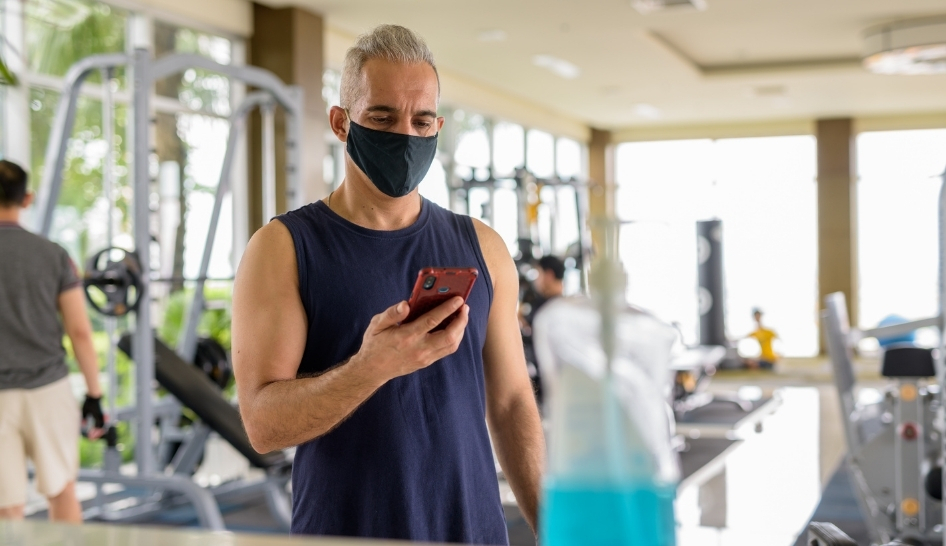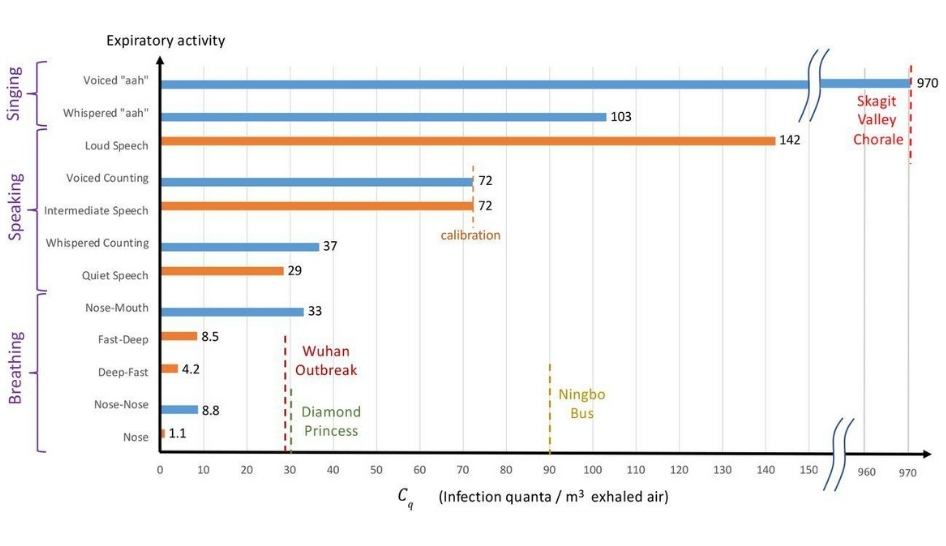One of the biggest concerns surrounding health club operations during COVID-19 has been the potential for airborne transmission, and the increased risk associated with indoor spaces. However, scientists increasingly recognize that not all indoor spaces are created equal. A well-ventilated health club implementing safety protocols does not carry the same level of risk as a less well-ventilated restaurant in which patrons are sharing a table with members outside their household while not wearing masks.
Read our article on Understanding Ventilation, COVID-19 Spread, and Your Gym during the COVID-10 pandemic to learn more about ventilation and filtration protocols.
In order to help us better understand and quantify risks associated with indoor spaces, two scientists at the Massachusetts Institute of Technology (MIT), Martin Z. Bazant and John W. M. Bush created a model for COVID-19 transmission in a well-mixed room factoring in a number of variables. The model underpins the open access app, and is built based on existing models of airborne disease transmission. Variables in the model include:
- Room dimensions
- Ventilation parameters, e.g. MERV rating and air changes
- Breathing rate
- Respiratory activity, e.g. exercising, talking, singing
- Mask type and mask compliance
The app calculates the number of people who can be in a given space for a certain amount of time before theoretically being exposed to COVID-19. The calculations and evidence supporting the app is outlined in the article, “A guideline to limit indoor airborne transmission of COVID-19,” now published in the Proceedings of the National Academy of Sciences.
Understanding Risk and Safety Parameters—But No Guarantees
This app can help club operators understand the different modifiable factors in their facility that can impact COVID-19 safety, and shed light on the impact these adjustments can have. For example, if you cannot upgrade your MERV filter or your building has a low ceiling height, this app can help you figure out other factors you can adjust to make your space as safe as possible. Every building and facility will have different inherent strengths and different capabilities when it comes to upgrading HVAC or increasing outdoor air. For example, a small studio with low ceiling height may be able to improve safety by increasing mask use. A gym with high ceilings and a garage door may not be able to update their MERV filter, but they can open the doors and windows to increase outdoor air circulation.


